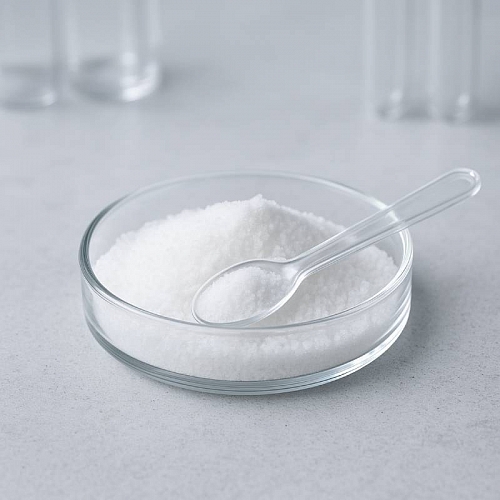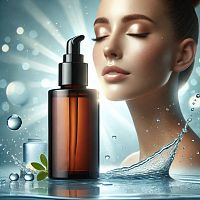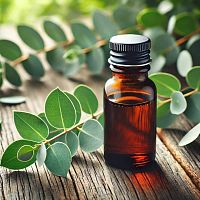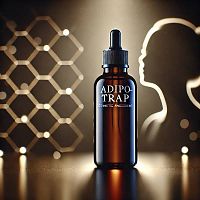-
 Absolutes
Absolutes
-
 Active Complexes
Active Complexes
-
 Actives and Peptides for Cosmetics
Actives and Peptides for Cosmetics
-
 Amino Acids
Amino Acids
-
 Food Flavorings
Food Flavorings
-
 Ayurveda
Ayurveda
-
 Vitamins
Vitamins
-
 Gelling Agents and Thickeners
Gelling Agents and Thickeners
-
 Hydrosols and Floral Waters
Hydrosols and Floral Waters
-
 Hydrolyzed Proteins
Hydrolyzed Proteins
-
 Fragrant and aromatic substances
Fragrant and aromatic substances
-
 Acids, Salts, Alcohols, and Alkalis
Acids, Salts, Alcohols, and Alkalis
-
 Preservatives and Antioxidants
Preservatives and Antioxidants
-
 Cosmetic Raw Materials
Cosmetic Raw Materials
-
 Dyes, Pearlescents, and Glitters
Dyes, Pearlescents, and Glitters
-
 Face Masks, Scrubs, and Dried Flowers
Face Masks, Scrubs, and Dried Flowers
-
 Oils, batters, macerates, oil mixtures
Oils, batters, macerates, oil mixtures
-
 Candle Supplies
Candle Supplies
-
 Melt and Pour Soap Bases
Melt and Pour Soap Bases
-
 Base for cosmetics, cream, serum, shampoo
Base for cosmetics, cream, serum, shampoo
-
 Fragrance Oils
Fragrance Oils
-
 Surfactants
Surfactants
-
 Peelings for Skin
Peelings for Skin
-
 Herbal Powders and Plant
Herbal Powders and Plant
-
 Silicones and Conditioning Surfactants for Hair
Silicones and Conditioning Surfactants for Hair
-
 Raw materials for dietary supplements
Raw materials for dietary supplements
-
 Packaging for Cosmetics and Perfumes
Packaging for Cosmetics and Perfumes
-
 Molds, Packaging, Tools
Molds, Packaging, Tools
-
 Organic Extracts
Organic Extracts
-
 Emollients for Cosmetics
Emollients for Cosmetics
-
 Emulsifiers
Emulsifiers
-
 Essential Oils
Essential Oils
Adipic Acid: A Multifunctional Ingredient for Advanced Cosmetic Formulations
Unlock the potential of sophisticated skincare with our high-quality Adipic Acid, a dicarboxylic acid offering a range of benefits for advanced cosmetic formulations. This versatile ingredient plays a crucial role as a pH adjuster, buffering agent, and can contribute to the texture and stability of various cosmetic products. Its unique properties make it a valuable addition to formulations targeting skin balance, product integrity, and enhanced user experience.
Applications and Areas of Use in Cosmetics:
Adipic acid's multifaceted nature allows for its incorporation into a diverse spectrum of cosmetic products, contributing to their efficacy and stability:
- pH Adjusters and Buffering Agents: Primarily utilized to regulate and stabilize the pH of cosmetic formulations, ensuring optimal performance of active ingredients and maintaining skin compatibility. This is crucial in products like toners, cleansers, and emulsions to prevent irritation and maintain the skin's natural acid mantle.
- Emulsion Stabilizers: Can contribute to the stability of emulsions (mixtures of oil and water), preventing separation and ensuring a consistent texture and appearance over time in creams, lotions, and conditioners.
- Chelating Agent: Possesses mild chelating properties, which can help to bind metal ions that might otherwise interfere with the stability or color of cosmetic formulations.
- Exfoliants (Indirectly): While not a direct exfoliant like AHAs or BHAs, its acidic nature can contribute to a mild keratolytic effect, aiding in the gentle removal of dead skin cells and promoting smoother skin texture, particularly in leave-on products at appropriate concentrations.
- Viscosity Modifiers: Can influence the viscosity and texture of certain formulations, contributing to a more elegant feel and application of creams, lotions, and gels.
- Hair Care Products: Used for pH adjustment in shampoos, conditioners, and styling products to optimize their performance and ensure compatibility with the hair and scalp.
- Color Cosmetics: Can assist in maintaining the stability and shade of pigments in makeup formulations by controlling pH.
- Sunscreen Formulations: Helps to maintain the pH stability of sunscreen emulsions, ensuring the efficacy of the UV filters.
- Antiperspirants and Deodorants: Used for pH adjustment to ensure the effectiveness of the active ingredients and maintain skin comfort.
- Toothpastes and Mouthwashes (Trace Amounts): While primarily oral care, trace amounts might be used for pH regulation. As per your request, this application will not be detailed.
Key Benefits for Cosmetic Formulations:
- Effective pH Adjustment: Crucial for maintaining the optimal pH range for both product stability and skin health.
- Enhances Emulsion Stability: Prevents the separation of oil and water phases, leading to longer-lasting and more aesthetically pleasing products.
- Contributes to Product Texture: Can influence the viscosity and feel of formulations, improving the user experience.
- Mild Chelating Properties: Helps to prevent discoloration and instability caused by metal ions.
- Potential for Mild Exfoliation: At appropriate concentrations, can contribute to smoother skin texture.
- Improves the Efficacy of Active Ingredients: Maintaining the correct pH ensures that active ingredients function optimally.
- Enhances Skin Compatibility: Proper pH balance helps to maintain the skin's natural barrier and prevent irritation.
- Versatile Application: Can be incorporated into a wide range of cosmetic product types.
- Globally Accepted: Generally recognized as safe for use in cosmetics at appropriate concentrations.
- Worldwide Shipping: Our online store provides delivery worldwide, making this valuable ingredient accessible globally.
Cosmetic Recipe: Gentle Balancing Toner with Adipic Acid
| Ingredient | Percentage (%) |
|---|---|
| Distilled Water | 89% |
| Glycerin | 5% |
| Witch Hazel Distillate | 3% |
| Adipic Acid | 0.5% |
| Sodium Citrate | 0.3% |
| Panthenol (Pro-Vitamin B5) | 1% |
| Natural Preservative (e.g., Phenoxyethanol) | 1.2% |
Instructions:
- In a clean beaker, combine the distilled water and glycerin. Stir until the glycerin is fully dissolved.
- Add the witch hazel distillate and stir gently.
- Carefully weigh and add the adipic acid and sodium citrate to the mixture. Stir until completely dissolved. The sodium citrate acts as a counter-ion to help buffer the pH.
- Incorporate the panthenol and stir until evenly distributed.
- Finally, add the natural preservative and mix thoroughly.
- Check the pH of the toner. The target pH should be between 4.5 and 5.5 for optimal skin compatibility. Adjust the amount of adipic acid or sodium citrate slightly if necessary to reach the desired pH.
- Carefully transfer the toner to a clean bottle with a suitable dispensing mechanism.
Application Recommendations:
- Perform a patch test on a small area of skin before widespread use to check for any individual sensitivity.
- Incorporate adipic acid at the recommended percentage to achieve the desired pH and buffering effect. Higher concentrations may be irritating to some skin types.
- Ensure the adipic acid is fully dissolved in the aqueous phase of your formulation.
- The combination of adipic acid and a salt like sodium citrate creates a buffer system, helping to maintain a stable pH.
- Monitor the pH of your final product during formulation and stability testing.
- Adipic acid is generally well-tolerated, but individuals with highly sensitive skin may experience mild irritation at higher concentrations.
- Store the finished product in a cool, dark place away from direct sunlight and heat.
- Refer to relevant regulatory guidelines for the permissible concentration of adipic acid in cosmetic products in your region.
And also go to the Blog from Мыло Опт, where we share useful information about creating the right natural cosmetics
| INCI | Adipic Acid | |
| Other | ||
| Color product | white | |
| Descriptio smell | characteristic | |
| Features | All information presented on the site is for reference only | |
| Input percentage | 0.2 - 1% | |
| Name | Adipic Acid 25 g | |
| Packaging | container for transportation | |
| Packing | 25 grams | |
| Solubility | water, ethanol | |
| View | crystalline powder | |
| Valid until | 10.2026 | |
-
Date:8 DecemberAuthor:Нина, МарганецReviews
Всегда приятно общаться с менеджерами магазина. Они всегда готовы помочь и ответить на любые вопросы.
Date:7 May 2025Author:Цецилия, ТульчинReviewsВсегда получаю от магазина полезные советы и рекомендации. Спасибо за вашу поддержку и профессионализм!















 Add to cart
Add to cart Buy in 1 click
Buy in 1 click

 Add a review
Add a review To favorites
To favorites To compare
To compare














